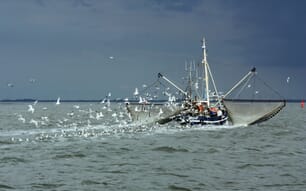The three-year project, from the Seventh Framework programme, was implemented by eighteen partners in eleven Asian, African and South American developing and Low Income, Food Deficit Countries (LIFDCs), encompassing the spectrum of development conditions and role of aquaculture in national economies. The partnership also included EU partners and international organizations.
A theory of change was elaborated and range of analytical frameworks, economic models and indicators, complemented by surveys and case studies developed.
The contribution of aquaculture to national GDP, excluding multiplier effects, was found to vary from negligible in countries with emergent aquaculture sectors up to 5% or more of national GDP in countries where the sector is very dynamic.
Aquaculture was shown to have helped lower global fish prices, increasing economic access for all but the very poorest consumers. Although households engaging in aquaculture were found less likely to be poor than those that did not, poor households too benefitted from engaging in fish farming, irrespective of scale of operation. Fish consumption rates of households engaged in fish farming were typically higher than national averages.
Both immanent (e.g. economic growth) and interventionist (the implementation of policies promoting aquaculture development, improving governance and capacity) factors, as well as institutional arrangements, public-private partnerships and pioneering companies and individuals, were found to be capable of creating enabling conditions for aquaculture growth.
Socio-cultural factors, especially gender and ethnicity, were also important: interventions tailored to match given specific socio-cultural contexts were most likely to lead to successful adoption and retention and delivery of equitable development outcomes, thereby producing lasting impact on livelihoods.
The volumes of seafood exported from developing to developed countries were found to approximate those of seafood imported by developing from developed countries.
While expensive seafood may be being exchanged for cheaper but not necessarily less nutritious seafood, thereby minimizing threats to food security, there remains a lack of supporting evidence that this is the case.
With the exception of Bangladesh no policies or interventions linking fish, aquaculture and nutrition were found in study countries and little is included in nutrition education on aquatic animal foods.
Project outputs are being disseminated among the development community to help improve efficiency and coordination of development initiatives focused on aquaculture that promotes food and nutrition security and alleviates poverty and helps focus research on addressing researchable gaps. The development of science outputs has also begun.
April 2015



